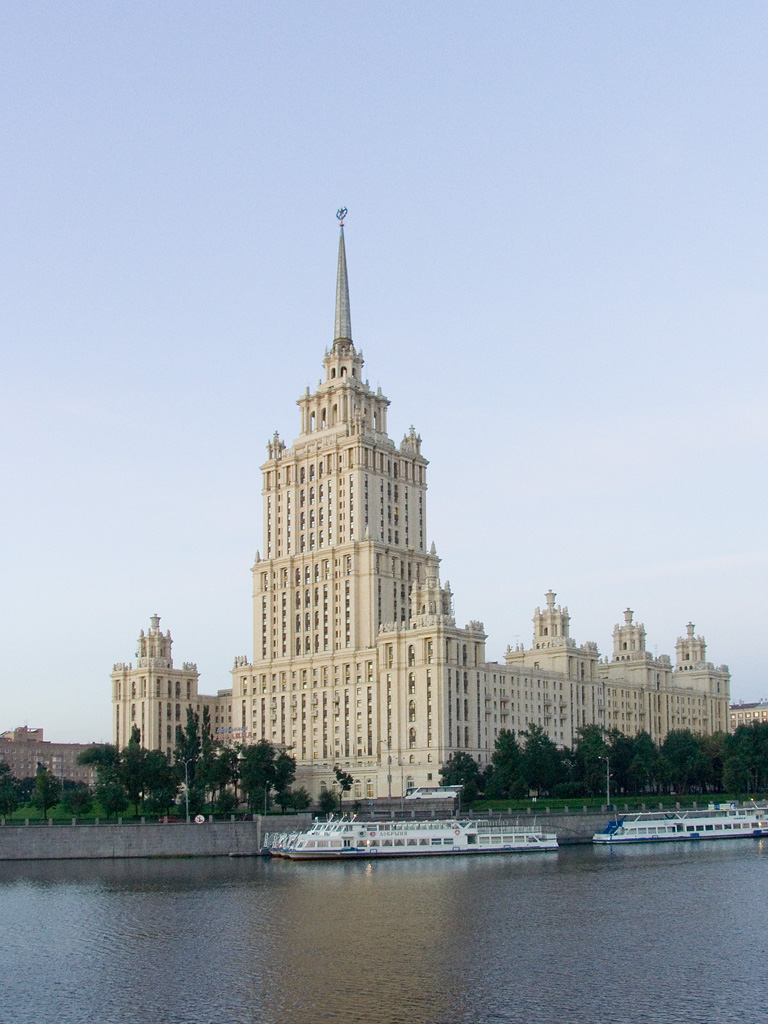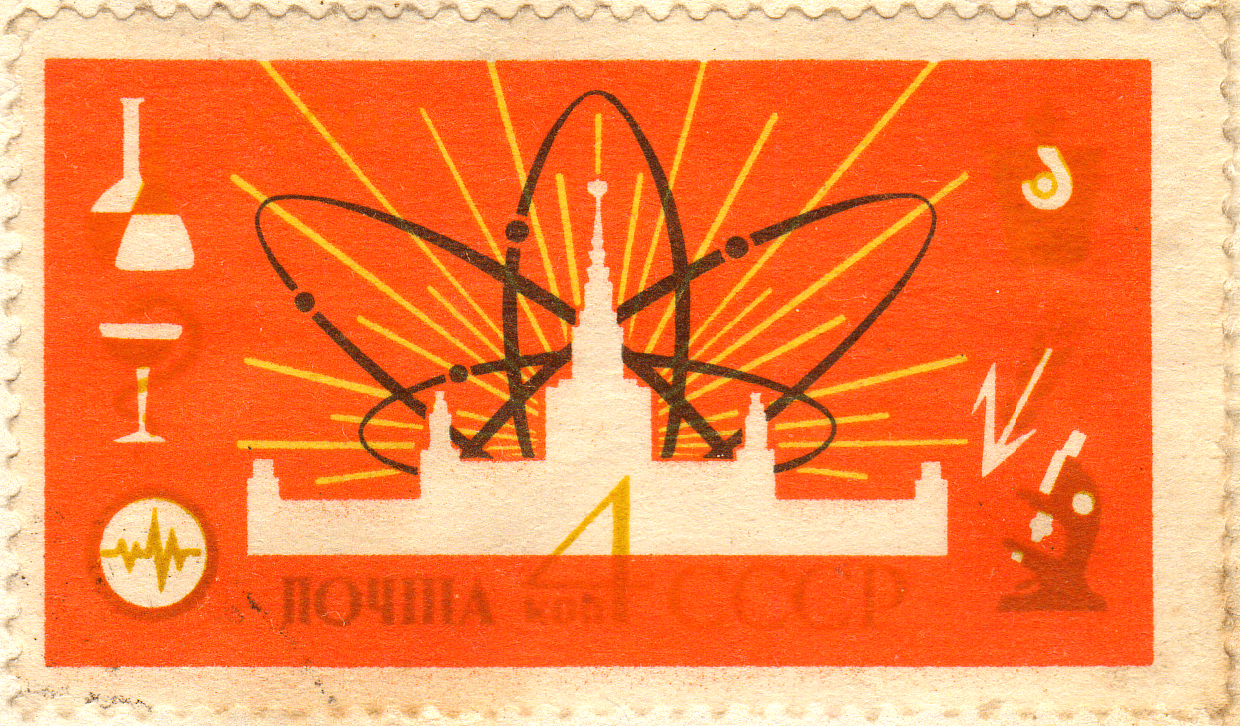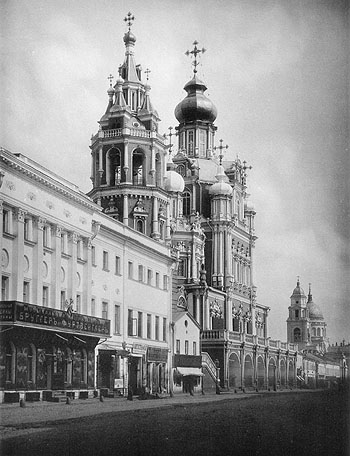|
Stalinist Architecture
Stalinist architecture (), mostly known in the former Eastern Bloc as Stalinist style or socialist classicism, is the architecture of the Soviet Union under the leadership of Joseph Stalin, between 1933 (when Boris Iofan's draft for the Palace of the Soviets was officially approved) and 1955 (when Nikita Khrushchev condemned "excesses" of the past decades and disbanded the Soviet Academy of Architecture). Stalinist architecture is associated with the Socialist realism school of art and architecture. Features As part of the Soviet policy of rationalization of the country, all cities were built to a general urban planning, development plan. Each was divided into districts, with allotments based on the city's geography. Projects would be designed for whole districts, visibly transforming a city's architectural image. The interaction of the state with the architects would prove to be one of the features of this time. The same building could be declared a Formalism (art), formalist b ... [...More Info...] [...Related Items...] OR: [Wikipedia] [Google] [Baidu] |
МГУ
Moscow State University (MSU), officially M. V. Lomonosov Moscow State University,. is a public university, public research university in Moscow, Russia. The university includes 15 research institutes, 43 faculties, more than 300 departments, and six branches. Alumni of the university include past leaders of the Soviet Union and other governments. As of 2019, 13 List of Nobel laureates, Nobel laureates, six Fields Medal winners, and one Turing Award winner were affiliated with the university. History Imperial Moscow University Ivan Shuvalov and Mikhail Lomonosov promoted the idea of a university in Moscow, and Elizabeth of Russia, Russian Empress Elizabeth decreed its establishment on . The first lectures were given on . Saint Petersburg State University and MSU each claim to be Russia's oldest university. Though Moscow State University was founded in 1755, St. Petersburg which has had a continuous existence as a "university" since 1819 sees itself as the successor of an a ... [...More Info...] [...Related Items...] OR: [Wikipedia] [Google] [Baidu] |
Alexey Dushkin
Alexey Nikolayevich Dushkin (; 24 December 1904 – 8 October 1977) was a Soviet architect, best known for his 1930s designs of the Kropotkinskaya and Mayakovskaya stations of the Moscow Metro. He worked primarily for subway and railroads and is also noted for his Red Gate Building, one of the Seven Sisters. Early years (1904-1934) Alexey Dushkin studied chemistry in Kharkiv for three years since 1921, then transferred to architectural college and graduated in 1930. Dushkin worked in city planning, setting up zoning plans for Donbas towns; he co-designed a college building in Kharkiv in 1932. Dushkin associated himself with VOPRA, a left-wing artistic association led by Arkady Mordvinov and Karo Alabyan. In 1932, Dushkin applied for the Palace of Soviets contestHis draftdid not win the main prize, but earned an invitation to Moscow to join the Palace design team, and later Ivan Fomin's ''Workshop No.3''. Dushkin's Metro (1934-1943) Kropotkinskaya (1935) His greates ... [...More Info...] [...Related Items...] OR: [Wikipedia] [Google] [Baidu] |
Ministry Of Foreign Affairs Of Russia Main Building
The headquarters of the Ministry of Foreign Affairs of Russia is one of seven Stalinist skyscrapers, designed and overseen by Vladimir Gelfreykh and Adolf Minkus. History The skyscraper was laid down in 1948 and completed in 1953. According to the biography of the architect Minkus (published in 1982), draft plans were first drawn up in 1946 and ranged from 9 to 40 stories. In 1947 two designs were proposed: one utilized layered setbacks while the other called for a more streamlined construction which culminated in a blunt rectangular top. In the second and approved design a metal spire, presumably ordered by Joseph Stalin, was hastily added to the tower's roof. Currently the building houses the offices of the Ministry of Foreign Affairs of Russia. Architecture The building The building has been attributed similarities with the Woolworth Building in Manhattan. The architectural appearance dates back to the English Gothic: its feature is the rigid ribs that emphasise the ... [...More Info...] [...Related Items...] OR: [Wikipedia] [Google] [Baidu] |
Hilton Moscow Leningradskaya
The Hilton Moscow Leningradskaya () is one of Moscow's Seven Sisters, skyscrapers built in the early 1950s in the Stalinist neoclassical style. Stalinist neoclassical architecture mixes the Russian neoclassical style with the style of American skyscrapers of the 1930s. A main element of Stalinist neoclassicism is its use of socialist realism art. The hotel, completed in 1954, was designed to be the finest luxury hotel in Moscow. The staircase features one of the longest lighting fixtures in the world—it was once in '' The Guinness Book of Records''. The halls and corridors of the hotel's upper floors are panelled in dark cherry wood. The hotel includes a restaurant, bar, lounge, spa and beauty salon, fitness centre with swimming pool, bureau de change, gift shop, meeting rooms, grand ballroom, and business center. [...More Info...] [...Related Items...] OR: [Wikipedia] [Google] [Baidu] |
Kudrinskaya Square Building
The Kudrinskaya Square Building is a building in Moscow, one of Seven Sisters Of Moscow Stalinist skyscrapers, designed by Mikhail Posokhin () and Ashot Mndoyants (). Design and construction features The building was richly decorated but lacked a unified stylistic direction. The parapets are in the ancient Roman style. The lobbies decorated with marble columns, stained-glass windows, and lamps in the form of candelabra are a reminiscence of Gothic interiors. The pointed turrets around the spire resemble the domes of an Eastern Orthodox church. On the roof of the stylobate, there are sculptural portraits of Soviet workers and soldiers. One of the stylistic features of the building were the stained glass windows, which are located in the halls above the lifts and the windows of the deli. Motifs from Russian folk culture were used in the design. The floors in the living rooms and corridors of the flats were laid with oak parquet, the bathrooms were tiled with metal tiles, and ... [...More Info...] [...Related Items...] OR: [Wikipedia] [Google] [Baidu] |
Kotelnicheskaya Embankment Building
Kotelnicheskaya Embankment Building is one of seven Stalinist skyscrapers laid down in September 1947 and completed in 1952, designed by Dmitry Chechulin (then Chief Architect of Moscow) and Andrei Rostkovsky. The main tower has 32 levels (including mechanical floors) and is tall. At the time of construction it was the tallest building in Europe. The building also incorporates a 9-story apartment block facing Moskva River, designed by the same architects in 1938 and completed in 1940. Initially built in stern early Stalinist style, with wet stucco wall finishes, it was re-finished in terracotta panels in line with the central tower and acquired ornate pseudo- Gothic crowns over its 12-story raised corners and center tower. By the end of World War II, the side wing was converted to multi-family kommunalka housing, in contrast to the planned elite status of the central tower. The central tower, of a conventional steel frame structural type, has a hexagonal cross-section with th ... [...More Info...] [...Related Items...] OR: [Wikipedia] [Google] [Baidu] |
Radisson Royal Hotel (Hotel Ukraina), Moscow
Hotel Ukraina (), also branded and marketed as the Radisson Collection Hotel, Moscow (), is a five-star luxury hotel in the city centre of Moscow, on a bend of the Moskva River. The hotel is one of the " Seven Sisters", and stands tall. It is the tallest hotel in Russia, the tallest hotel in Europe, and the 52nd-tallest hotel in the world. It is a Radisson Collection hotel, managed by the Rezidor Hotel Group. History Hotel Ukraina was commissioned by Joseph Stalin. It was designed by Arkady Mordvinov and Vyacheslav Oltarzhevsky (the leading Soviet expert on steel-framed highrise construction), and is the second tallest of the neoclassical Stalin-era " seven sisters" (, with 34 stories). It was the tallest hotel in the world from the time of its construction until the Westin Peachtree Plaza Hotel opened in Atlanta, Georgia, United States in 1976. History Following the 1917 revolution, domestic architects in Moscow initiated discussions regarding the construction of ... [...More Info...] [...Related Items...] OR: [Wikipedia] [Google] [Baidu] |
Gothic Style
Gothic architecture is an architectural style that was prevalent in Europe from the late 12th to the 16th century, during the High and Late Middle Ages, surviving into the 17th and 18th centuries in some areas. It evolved from Romanesque architecture and was succeeded by Renaissance architecture. It originated in the ÃŽle-de-France and Picardy regions of northern France. The style at the time was sometimes known as ''opus Francigenum'' (); the term ''Gothic'' was first applied contemptuously during the later Renaissance, by those ambitious to revive the architecture of classical antiquity. The defining design element of Gothic architecture is the pointed arch. The use of the pointed arch in turn led to the development of the pointed rib vault and flying buttresses, combined with elaborate tracery and stained glass windows. At the Abbey of Saint-Denis, near Paris, the choir was reconstructed between 1140 and 1144, drawing together for the first time the developing Gothic ... [...More Info...] [...Related Items...] OR: [Wikipedia] [Google] [Baidu] |
Naryshkin Baroque
Naryshkin Baroque, also referred to as Moscow Baroque or Muscovite Baroque, is a particular style of Baroque architecture and decoration that was fashionable in Moscow from the late 17th century into the early 18th century. In the late 17th century, the Western European Baroque style of architecture combined with traditional Russian architecture to form this unique style. It is called Muscovite Baroque as it was originally only found within Moscow and the surrounding areas. It is more commonly referred to as Naryshkin Baroque, as the first church designed in this style was built on one of the Naryshkin family's estates. History The first church built in the Naryshkin Baroque style was the Church of the Intercession of the Holy Virgin in the village of Fili, that was built on the estate of the Naryshkin family, who were Moscow boyars. The member of this family that is most related with this style of architecture is Lev Kirillovich Naryshkin, the uncle of Peter the Great. Lev N ... [...More Info...] [...Related Items...] OR: [Wikipedia] [Google] [Baidu] |
Seven Sisters (Moscow)
The Seven Sisters () are a group of seven skyscrapers in Moscow designed in the Stalinist architecture, Stalinist style. They were built from 1947 to 1953. At the time of construction, they were the tallest buildings in Europe, and the main building of Moscow State University remained the List of tallest buildings in Europe, tallest building in Europe until 1990. The seven are: Radisson Royal Hotel, Moscow, Hotel Ukraina, Kotelnicheskaya Embankment Building, Kotelnicheskaya Embankment Apartments, the Kudrinskaya Square Building, the Hilton Moscow Leningradskaya Hotel, the Ministry of Foreign Affairs of Russia main building, main building of the Ministry of Foreign Affairs, the main building of Moscow State University, and the Red Gates Administrative Building. There were two more skyscrapers in the same style planned that were never built: the Eighth Sister, Zaryadye Administrative Building and the Palace of the Soviets. History The construction of the first Soviet skyscrape ... [...More Info...] [...Related Items...] OR: [Wikipedia] [Google] [Baidu] |
Skyscrapers
A skyscraper is a tall continuously habitable building having multiple floors. Most modern sources define skyscrapers as being at least or in height, though there is no universally accepted definition, other than being very tall high-rise buildings. Skyscrapers may host offices, hotels, residential spaces, and retail spaces. One common feature of skyscrapers is having a steel frame that supports curtain walls. These curtain walls either bear on the framework below or are suspended from the framework above, rather than resting on load-bearing walls of conventional construction. Some early skyscrapers have a steel frame that enables the construction of load-bearing walls taller than those made of reinforced concrete. Modern skyscraper walls are not load-bearing, and most skyscrapers are characterized by large surface areas of windows made possible by steel frames and curtain walls. However, skyscrapers can have curtain walls that mimic conventional walls with a small surface ... [...More Info...] [...Related Items...] OR: [Wikipedia] [Google] [Baidu] |
Moscow Ukraina Hotel
Moscow is the Capital city, capital and List of cities and towns in Russia by population, largest city of Russia, standing on the Moskva (river), Moskva River in Central Russia. It has a population estimated at over 13 million residents within the city limits, over 19.1 million residents in the urban area, and over 21.5 million residents in Moscow metropolitan area, its metropolitan area. The city covers an area of , while the urban area covers , and the metropolitan area covers over . Moscow is among the world's List of largest cities, largest cities, being the List of European cities by population within city limits, most populous city entirely in Europe, the largest List of urban areas in Europe, urban and List of metropolitan areas in Europe, metropolitan area in Europe, and the largest city by land area on the European continent. First documented in 1147, Moscow became the capital of the Grand Principality of Moscow, which led the unification of the Russian lan ... [...More Info...] [...Related Items...] OR: [Wikipedia] [Google] [Baidu] |






